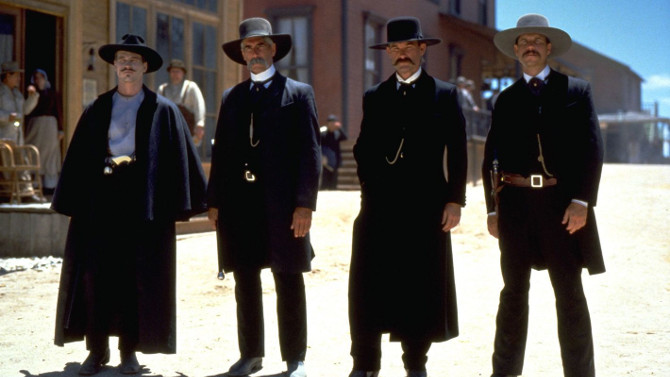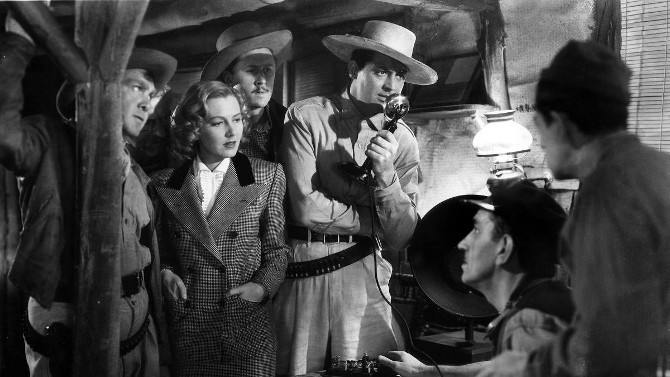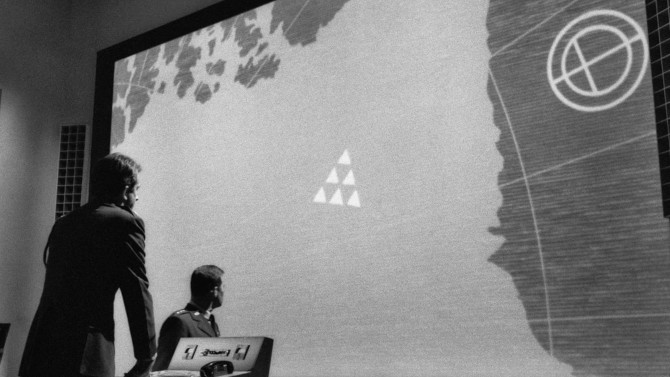
Safety First
Like a severe and utterly serious version of Stanley Kubrick’s 1964 satirical dark comedy Dr. Strangelove or: How I Learned to Stop Worrying and Love the Bomb, you would think that Fail Safe would have been the original release in theatres that was then later spoofed, yet that is not the case. Released approximately six months later in the same year, as you might imagine, it led to very poor returns at the box office – dare I say it (as the film deals with this subject matter)... it was a bomb! Despite that, over time, it has become a bonafide classic. Based upon Eugene Burdick’s 1962 novel of the same name and directed by Sidney Lumet (Dog Day Afternoon), he introduces us to our main players by way of little vignettes.
-
Star Pick with Damon Johnson
 Grave ConsequencesTombstoneJune 6, 2018
Grave ConsequencesTombstoneJune 6, 2018It was an absolute pleasure to sit down with guitar guru Damon Johnson a few months back. The co-founder of Brother Cane, the band helped shoot Johnson onto the national scene – partially thanks to three number one hits on rock radio, namely: “Got No Shame”, “And Fools Shine On”, and “I Lie in the Bed I Make”. And, for horror fans, “And Fools Shine On” was used in Halloween: The Curse of Michael Myers (the sixth entry in the franchise). Disbanding in 1998, Johnson has been in demand ever since. He has worked (either touring or writing/recording) with Sammy Hagar (album: Marching to Mars), Faith Hill, John Waite, Whiskey Falls, Queensrÿche, Stevie Nicks, as well as many others (including his own solo projects). In 2004, he joined Alice Cooper as his lead guitarist. . . also co-writing and recording the superlative album Dirty Diamonds – some standout songs include, “Woman of Mass Distraction”, “Perfect”, “Dirty Diamonds”, and “Sunset Babies (All Got Rabies)”. On the road for five consecutive tours until 2011 (I saw them back in 2006), he was asked to join another iconic rock band, Thin Lizzy – Cooper gave him his blessing, and he made the jump.
-
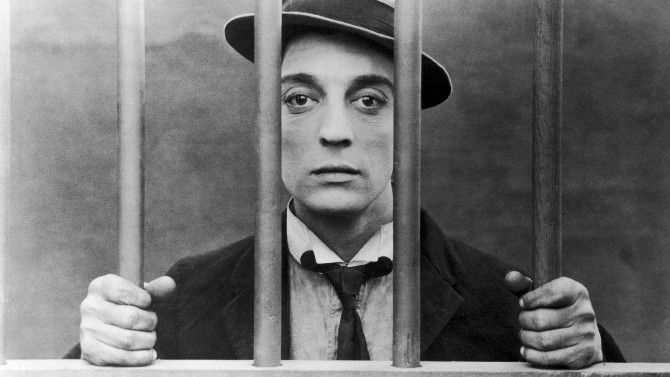
Escape Goat
The GoatMay 30, 2018Will Buster Keaton ever catch a break?. . . well, let’s be honest, by the end of the film, things usually work out alright. But, as The Great Stoneface hops, skips and jumps his way through a bevy of ever complicated (and might I add, intricately plotted) obstacles – no matter what movie, luck never seems to come his way. Case in point, 1921's two reel short, The Goat – which has nothing to do with an animal. Opening with a clever gag in which Keaton, (playing a famished, unlucky man monikered The Goat), is seen heading to the back of a bread line. . . misfortune reveals that the last three men in the procession are not actually men at all – they are mannequins showing off clothing for a store, hence, the never moving lineup.
-
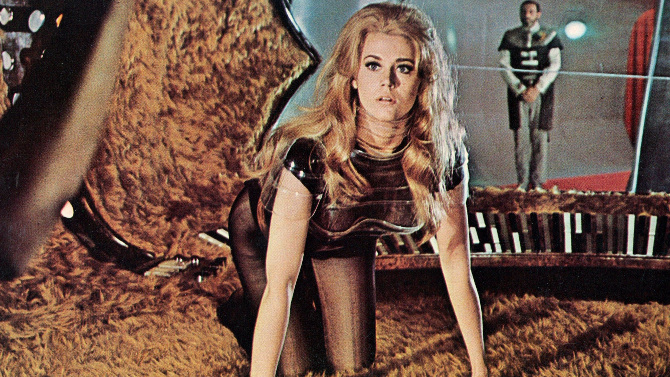
Queen of the Galaxy
BarbarellaMay 22, 2018Like an episode of Star Trek on Viagra, 1968's Barbarella is an exploitative romp in space, a journey that will take you far past the gaseous crevices of Uranus and into another sci-fi tinged dimension. Written by a pair of era icons (and seven other collaborators), two time Oscar nominee Terry Southern and Roger Vadim (also the director), you will likely never see another movie have an opening credits sequence like this one – a 401st century astronaut, Barbarella (Jane Fonda – Vadim’s wife at the time), slowly removes her spacesuit whilst floating in a gravity-less craft. . . a most sultry, slow-motion striptease (the effect was achieved by having Fonda lie on a large piece of plexiglass with an image of the spaceship underneath her. . . filmed from above, it flawlessly reenacts the semblance of zero gravity).
-
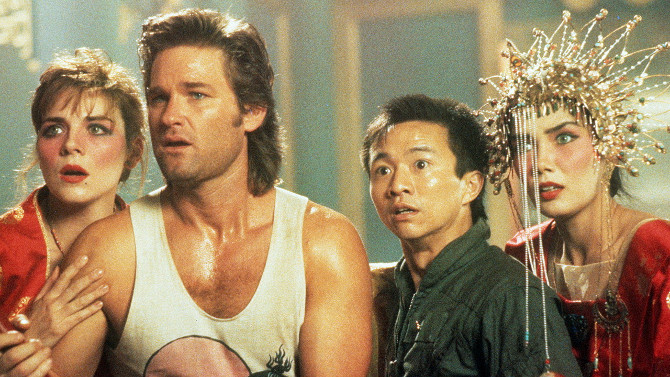
Pork-Chop Suey
Big Trouble in Little ChinaMay 15, 2018One of the great anti-heros of the 1980's, Kurt Russell’s Snake Plissken (John Carpenter’s Escape From New York) is a quick-thinking cynic; a cool, level-headed former Special Forces military man with a plan. . . and let’s face it, his combination of quick wit and eye patch makes him one bad-ass muthafuka. Quite the opposite, Jack Burton (also played by Russell), with his diction having a John Wayne tinge, is a cocky, brash American, a fly-by-the-seat-of-his-pants ‘in his own mind’ leader who lacks the brains, the skills or the know how to be in that all-important position. The main protagonist of John Carpenter’s 1986 fantastical martial arts action/adventure/comedy Big Trouble in Little China, Burton is a truck driver (his big rig named The Pork-Chop Express), spending those long days and even longer nights spouting his unique brand of advice to whoever is listening on their CB – a prime example, “when some wide-eyed, eight-foot-tall maniac grabs your neck, taps the back of your favorite head up against the barroom wall, and he looks you crooked in the eye and he asks if ya paid your dues, you just stare that big sucker right back in the eye, and you remember what ol’ Jack Burton always says at a time like that: ‘Have you paid your dues, Jack?’ ‘Yessir, the check is in the mail’”.
-
Star Pick with John Carpenter
 WingmanOnly Angels Have WingsMay 8, 2018
WingmanOnly Angels Have WingsMay 8, 2018What is there to say about an icon like John Carpenter? An auteur with the skill to make dynamic features with a minuscule budget, his film Halloween majorly influenced the slasher sub-genre (along with gialli, and other movies such as Peeping Tom, Psycho, The Texas Chainsaw Massacre and Black Christmas). One of the most prolific horror filmmakers since the 1970s, he followed up the October 31st related motion picture with titles like The Fog, The Thing, Christine, They Live, amongst many others, whilst he has branched out into other genres with films like Assault on Precinct 13 (action), Escape From New York and its sequel Escape From L.A. (sci-fi action), Starman (a sci-fi romance), and Big Trouble in Little China (an action adventure comedy).
-
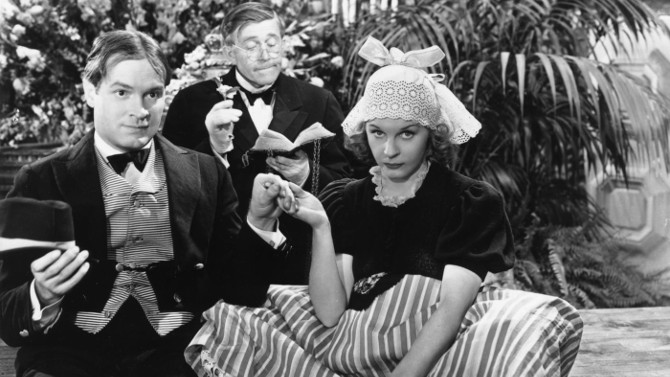
Muzzle Tov
Never Say DieMay 4, 2018A rich, hypochondriac of a man, John Kidley (Bob Hope), haunted by a Black Widow (a murderous, marry-a-wealthy-husband-a-year type woman, not a spider), Juno Marko (Gale Sondergaard), flees her side, making his way to a beautiful health-resort-centred town called Bad Gaswasser, Switzerland, hoping that the hidden locale, nestled amongst the picturesque Alps, will help him with his supposed condition, and, more importantly, in avoiding the persistent dame – hence the 1939 film’s title, Never Say Die. Now, of course, the quote offered at the opening is spoken by Kidley, and it references his perceived awful luck. And, to be honest, Ms. Marko is quite the woman. . . having ditched her most recent beau (she witnessed him slipping and falling off the Matterhorn from mere inches behind him – wink wink, nudge nudge), Kidley is her next mark, and it does not take her long to track the wealthy gent down once again. Here is a piece of witty dialogue from the film, emphasizing their rather amusing predicament:

